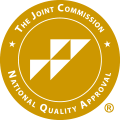Pacific Grove Hospital is a nationally recognized 68-bed acute psychiatric and chemical dependency treatment center offering inpatient & outpatient services for psychiatric illnesses, addictions & co-occurring disorders.
Understanding Drug Addiction and Substance Abuse
Learn about drug addiction and substance abuse
Drug abuse, or substance abuse, is a pattern of drug use in which a person uses the substance in quantities or ways that are harmful to themselves or other people. Drugs of abuse provide the user with some sort of intoxication or “high” that alters perception, judgment, attention, or physical control. While the usage of some drugs, such as cocaine, has declined in recent years, club drugs and prescription medication are growing in popularity. People abuse psychoactive, mind-altering drugs for many complex reasons, including experimentation, escaping reality, relief from painful emotions, as a way to cope with stress or to have fun with friends. Drug abuse is dangerous, and not always in the ways people believe. Drug use, notably the use of drugs with high addiction potential, can lead to addiction and physical dependence, which can lead to potentially dangerous withdrawal symptoms if the substance is reduced or stopped. Additionally, many of the more dangerous drugs can lead to death by overdose when taken in quantities that overwhelm the body or when combined with other types of drugs. The most common drugs of abuse fall into several categories:
CNS depressants and downers slow down the central nervous system and produce sedation and relaxation. Downers include tranquilizers, barbiturates, benzodiazepines, GHB, and Rohypnol.
Hallucinogens and dissociative drugs, also known as psychedelics, include PCP, LSD, peyote, ecstasy, ketamine, and psilocybin. These drugs cause changes in sensory and thought perceptions and can be swallowed, absorbed through oral mucosa, and smoked.
Inhalants, including solvents (such as gasoline and glues), aerosols (spray paint), gasses (propane, butane), nitrous oxide, and nitrates (“poppers”), are chemicals that cause intoxication when sniffed or inhaled (a process known as “huffing”).
Marijuana (“grass,” “pot,” and “weed”) is the most commonly abused drug in the United States. Pot can be smoked or swallowed and causes feelings of euphoria, impairs memory, impedes coordination, and distorts reality.
Narcotics and opiates lead to feelings of blissful euphoria, relaxation, and a sense of overall well-being. Opiate narcotics include heroin, prescription painkillers, and opium. These drugs can be injected, smoked, snorted, or swallowed.
Statistics
Drug addiction statistics
Over 15 million people worldwide struggle with drug abuse and addiction. IV drug abuse (definitely the most dangerous way to abuse illegal drugs) has been reported in 148 countries, of which 120 countries report increased amounts of HIV/AIDS infection among these IV drug users.
In the United States, illegal drug use is steadily increasing. In 2009, approximately 23.5 million people ages 12 and older in the U.S. (or 9.3% of the population) required inpatient treatment for substance abuse or alcoholism. Of these, only about 2.6 million people (or 11.2% of that population) received drug rehab at a specialized treatment center.
Causes and Risk Factors
Causes and risk factors for drug abuse and addiction
Researchers in the field of addition have learned that there is not one single cause for the development of addiction in some and not in others. Addiction is likely caused by the interplay and influence of a combination of genetic, physical, and environmental risk factors working together. The more risk factors a person has, the greater the chance that he or she will develop an addiction. Causes for drug and substance abuse and addiction include:
Genetic: Our genes amalgamated with environmental elements comprise roughly half of a person’s susceptibility to addiction. Addiction is known to run in families; people who have a first-degree relative who has struggled with addiction are more likely to develop an addiction than those without a similar history. However, not all those with a genetic component will develop an addiction nor do all people who develop addictions have a family history of the disease.
Physical: Drugs of abuse contain specific chemicals that act upon the body’s communication system, disturbing the ways in which neurons send, receive, and process information. The longer a person abuses drugs, the more likely it is that the drugs will cause lasting damage to this delicate system. Chronic drug abuse may signal to the body to reduce the amount of neurotransmitters released, leading to a physical dependence upon drugs.
Environmental: People who begin to experiment with drugs at an earlier age are at an increased risk for developing an addiction later in life. Others will find that effects from certain substances temporarily alleviate some of the unpleasant stresses associated with life and have become dependent on these substances as a way to cope with negative life events.
Risk Factors:
- Lack of parental supervision and involvement
- Peer group who encourages drug use
- Lower socioeconomic status
- Poor social and life skills
- Availability of drugs
- History of aggressive behaviors
- History of physical or sexual abuse
Signs and Symptoms
Signs and symptoms of substance abuse and addiction
The signs and symptoms of drug use, abuse, and addiction will vary tremendously from person to person based upon a number of factors. These factors include the drug of abuse, frequency of use, presence of addiction, addition to other drugs, length of addiction, and amount of substance used. The most common signs and symptoms of substance abuse are broken down by drug of abuse:
Depressants and downers:
- Confusion and disorientation
- Slurred speech
- Impaired coordination
- Drowsiness and fatigue
- Decreased respiration and heart rate
- Depression
- Impaired memory and judgment
- Decreased anxiety
- Overall feelings of relaxation and well-being
- Lowered inhibitions
Hallucinogenic and dissociative drugs:
- Altered states of perception and total disorientation
- Insomnia
- Tremors
- Impulsive behaviors
- Nausea, vomiting, diarrhea
- Panic attacks and increased anxiety
- Increased heart rate, body temperature, and blood pressure
Inhalants:
- Impaired motor coordination
- Loss of memory
- Weakness and fatigue
- Brief intoxication
- Loss of inhibition
- Nausea and vomiting
- Syncope
- Headache
Marijuana:
- Euphoria and relaxation
- Decreased ability to concentrate and learn
- Anxiety and panic attacks
- Psychosis
- Cough
- Impaired reaction time
- Distorted sensory perception
- Impairment in balance, coordination, and memory
- Increased heart rate and appetite
Opiates:
- Drowsiness and dizziness
- Euphoria
- Sensation of heaviness in extremities
- Impaired memory and increased confusion
- Syncope
- Respiratory depression and arrested breathing
Stimulants:
- Tachycardia
- Paranoia
- Violent, erratic behaviors
- Psychosis
- Hypertension
- Hyperthermia
- Increased metabolism and decreased appetite
- Feelings of exhilaration and increased energy
- Increased mental acuity
- Tremors
- Irritability
- Anxiety, panic attacks
Effects
Effects of substance abuse and addiction
The long-term effects of drug abuse can vary immensely from person to person based upon the type of drug used, presence of health-related conditions, existence of mental health disorders, individual makeup, and length of drug abuse. Consequences of long-term drug use affect nearly every aspect of an individual’s life, leaving nothing untouched. Common effects of chronic drug abuse are broken down below based upon drug of choice:
CNS depressants and downers:
- Addiction
- Consequences of risk-taking behaviors
- Amnesia
- Hypotension
- Decreased respiration rate
- Tolerance
- Withdrawal
Hallucinogenic and dissociative drugs:
- Cardiac complications
- Liver damage
- Violent, erratic behaviors
- Break with reality
- Flashbacks
- Intrusive thoughts
- Consequences of impulsive, risky behaviors
- Continuing hallucinations
- Memory loss
Inhalants:
- Loss of consciousness
- Memory impairment
- Damage to cardiovascular and nervous system
- Delusions
- Confusion and disorientation
- Coma
- Seizures
Marijuana:
- Frequent respiratory infections
- Decline in mental health
- Increased risks for cancer
Opiates and narcotic drugs:
- Hypotension
- Decreased respiration rate
- Mood swings
- Addiction
- Collapsed veins
- Septicemia
- Abscess at injection site
- Constipation
- Endocarditis
- Hepatitis B and C
- HIV/AIDS infection
- Fatal overdose
- Coma
- Death
Stimulants:
- Psychosis
- Malnutrition
- Insomnia
- Cardiac and cardiovascular complications
- Addiction
- Nasal perforation
- Severe dental problems (“meth mouth”)
- Stroke
- Heart attack
- Seizures
Withdrawal & Overdose
Effects of withdrawal & overdose
All drugs of abuse can cause addiction and physical dependence, some more quickly than others. When a person has become addicted to a drug, his or her body will adapt to the presence of the drug and if the drug use is promptly stopped or drastically reduced withdrawal symptoms occur. Symptoms of withdrawal range from mild to very severe depending on the type of drug – it’s always recommended that any attempts to stop using should be overseen by a physician in a treatment facility to monitor and prevent complications. Effects of withdrawal are broken down by drug type:
CNS Depressants Withdrawal:
- Loss of appetite
- Tachycardia
- Insomnia
- Anxiety, agitation, and irritability
- Headache
- Seizures
CNS Depressants Overdose:
- Ataxia, weakness and hypotonia
- Paradoxical agitation
- Respiratory depression
- Dizziness
- Anxiety and agitation
- Confusion and drowsiness
- Diplopia and nystagmus
- Unresponsiveness
- Hypotension
- Increased risk of death when combined with alcohol
- Amnesia
- Coma
Hallucinogenic and Dissociative Withdrawal:
- Cravings
- Fatigue
- Irritability
- Anhedonia
- Suicide
Hallucinogenic and Dissociative Overdose:
- Self-injury or suicide attempts
- Tachycardia
- Tachypnea
- Agitation and anxiety
- Acute psychotic behavior
- Psychotic break
- Hallucinations
Inhalant Withdrawal:
- Syncope
- Depression
- Nausea and vomiting
- Headache
- Anxiety and irritability
- Cravings for the drug
Inhalant Overdose:
- Sudden heart failure
- Hypoxia
- Cardiac failure
- Coma
- Sudden sniffing death syndrome
Marijuana Withdrawal:
- Anger
- Loss of concentration
- Headaches
- Agitation
- Mood swings
- Insomnia
- Depression
- Nightmares, night sweats, and vivid dreams
Opiate Withdrawal:
- Tremors and spasms
- Anxiety and panic
- Nausea, vomiting, diarrhea
- Tachycardia
- Irritability, agitation, restlessness
- Insomnia
- Chills and sweating
- Goosebumps
- Hypertension
- Muscle and bone pain
- Depression
- Suicidal thoughts and behaviors
Opiate Overdose:
- Miosis – constricted pupils
- Decreased, erratic, sometimes absent respiration rate
- Cyanosis
- Pale, clammy skin
- Slurred speech
- CNS depression
- Ventricular arrhythmias
- Slowed, erratic, or stopped heart rate
- Acute mental status change, decreased response to stimuli
- Hypotension
- Coma
Stimulant Withdrawal:
- Drug cravings
- Insomnia and fatigue
- Nausea and vomiting
- Agitation and irritability
- Depression
- Tremors and chills
- Muscle pain
- Psychosis
Stimulant Overdose:
- Nausea and vomiting
- Chills and profuse sweating
- Tachycardia
- Erratic breathing
- Paralysis
- Heart attack
- Extreme anxiety, panic, agitation, aggression, restlessness
- Passing out
- Tightening in chest or chest pain
- Hyperthermia
- Hallucinations
- Paranoia
- Seizures
- Stroke
Co-Occurring Disorders
Co-occurring disorders
Many people who struggle with drug abuse and addiction have co-occurring mental health disorders. Some of the most commonly co-occurring disorders include:
- Depressive disorders
- Anxiety disorders
- Bipolar disorder
- Schizophrenia
- Polysubstance abuse
- Antisocial personality disorder
- Borderline personality disorder
- Post-traumatic stress disorder (PTSD)












